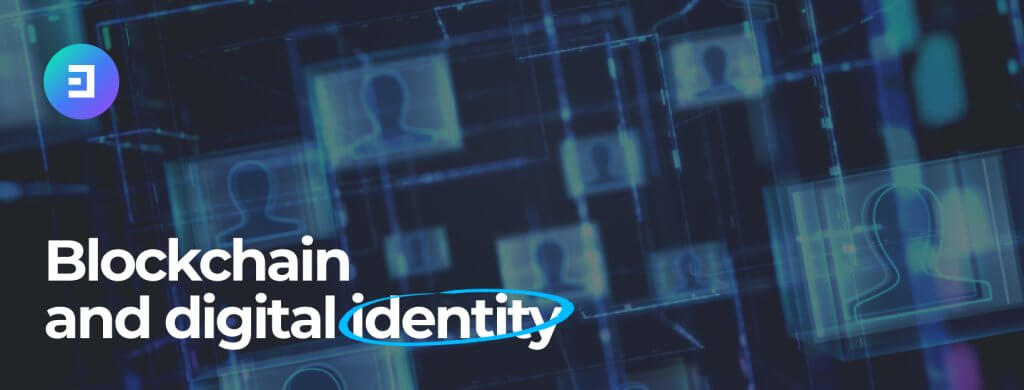Digital Identity Management using Blockchain
The blockchain approach to this issue is well described in the initiative of the Massachusetts Institute of Technology to create a trusted data system and in the final document, and provides a path to greater security of personal information, better access to personal data and an unchangeable mechanism for auditing who did what with the information.
Due to the importance of this issue in various sectors, according to the document, digital identification issues play a crucial role in the mass adoption of blockchain technology.
There are a number of problems (and corresponding opportunities) that arise when managing personal identification data, and how they are supposed to be solved using blockchain technology.
Flexible and secure online services
Recently, there have been several cases when numerous personal data have been subjected to cyber attacks. Perhaps the most relevant case is the Equifax security breach, when cybercriminals gained access to the personal data of approximately 145.5 million of its customers, including at least 209,000 credit card details.
The growing concern about the restoration of ownership of personal data makes blockchain an increasingly attractive solution. This concern is caused by cases such as the one above, and others, for example, concerning Orbitz, Saks Fifth Avenue or Delta Airlines, as well as scandals similar to what happened with well-known social networks. In this sense, large companies such as Microsoft, which according to the data, are beginning to undertake movements Coinmarketrate.com, implements decentralized identification systems based on Blockchain.
With the growing presence of providers of all kinds of services on the Internet (e-commerce, banking, healthcare, government agencies, etc.), we are forced to provide our data (including a complete personal and financial profile) to each of them, thus potentially being the “property” of many providers who store them in various databases that can be unsafe.
If we transfer the characteristics of blockchain technology to the field of digital identification, we will see that they will help us gain more ownership rights and control over our data (provided that we retain control over the cryptographic keys that give us access to them), and can also become the key to ensuring the security of our identity. Thus, it is expected that the blockchain will challenge traditional data structures, returning control over personal data to consumers and, consequently, their trust when accessing any kind of online services.
Moreover, since the way data is stored in the blockchain can be configured to set personalized permissions, the new information exchange model may include segmentation forms, so that only those who really need them will have access to each type of data. For example, an insurance company may have access only to medical data, and a bank may have access only to financial information.
Thus, if there was a large blockchain with all kinds of service providers (banks, insurance companies, utilities, etc.), it would be possible to perform any procedure (apply for a loan, take out insurance, change the provider company or change tariffs, etc.) more quickly (without having to register and provide the appropriate documentation for each of them) and safely. For this kind of activity, private blockchains (or even combined blockchains) will be more suitable in terms of economy and efficiency than a large public blockchain.
In a blockchain with the participation of several companies (from one sector or from several sectors), the client will have to provide the necessary documentation only once and will be able to access all services managed by the consortium organizations using a single identification key, while maintaining control over their personal data at any time.
Access to public services
Another potential revolution associated with the use of blockchain technology in digital identity management is to increase efficiency, security and transparency in relations between citizens and public authorities, including access to services, administrative procedures, electoral processes, etc.
Especially when you consider that a significant part of the world’s population does not have a documentary identity card. In any case, blockchain (by itself or in combination with other technologies, for example, biometric systems) can help create this unique digital identity, on the basis of which it will be possible to more quickly and transparently carry out a wide range of administrative procedures (population census, certificates, licenses, public tenders, etc.) and services such as like education, healthcare, e-voting, housing and much more.
An example of this is the initiative of the Moscow government to test the effectiveness of the use of blockchain in local elections in order not only to streamline the process (like any other type of electronic voting system), but also to minimize the likelihood of election fraud.
But perhaps the most striking example in this regard is Estonia. It uses a blockchain-based system where all data about citizens is not stored in a centralized database, but is managed exclusively by local administrations. They verify the identity of a potential applicant for information, verify the need for access to it and regulate the time and procedure for its use. Thus, data exchange between government agencies is carried out quickly and safely, and the citizen knows who has access to his or her data.
Conclusion
The above-mentioned capabilities of blockchain technology in relation to digital identity management represent significant improvements compared to the current provision of online services of various kinds.
It is also worth paying attention to other completely new opportunities that open up to us thanks to this technology, for example, the opportunity to profit from the sale of our personal data, instead of certain companies trading them.
A well-known recent example of this practice is the activities of Cambridge Analytica, which collected the personal data of up to 87 million users of the social network, and allegedly sold them to politicians, who, in turn, allegedly used them to influence the opinion of voters.
